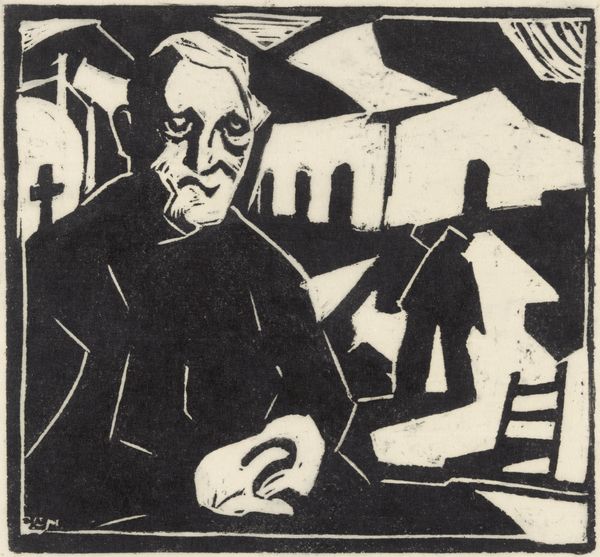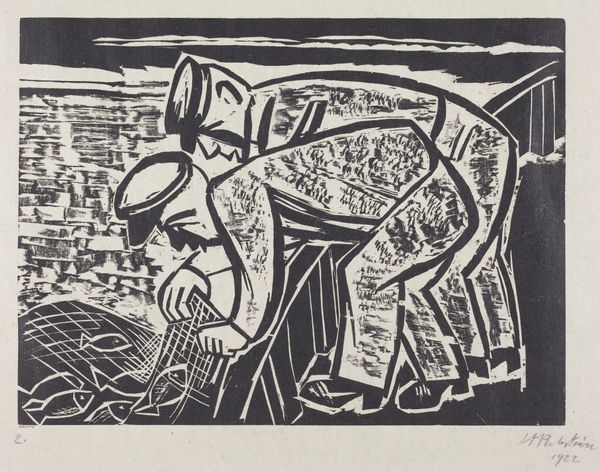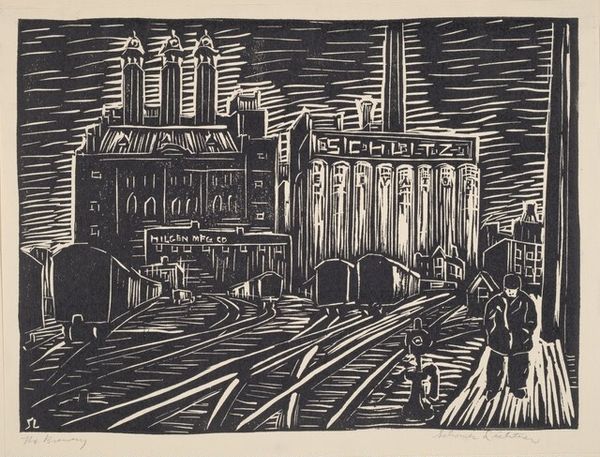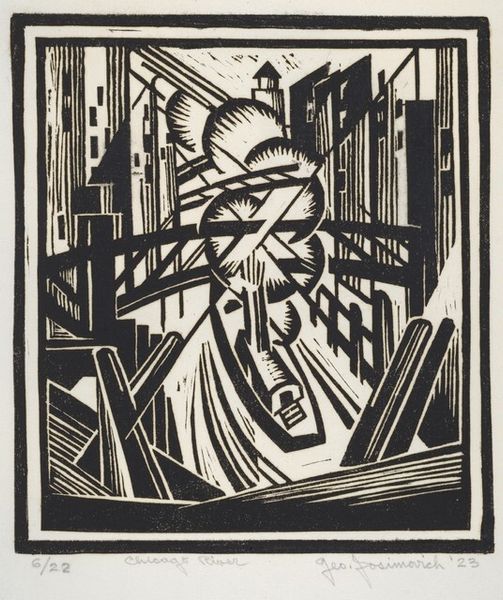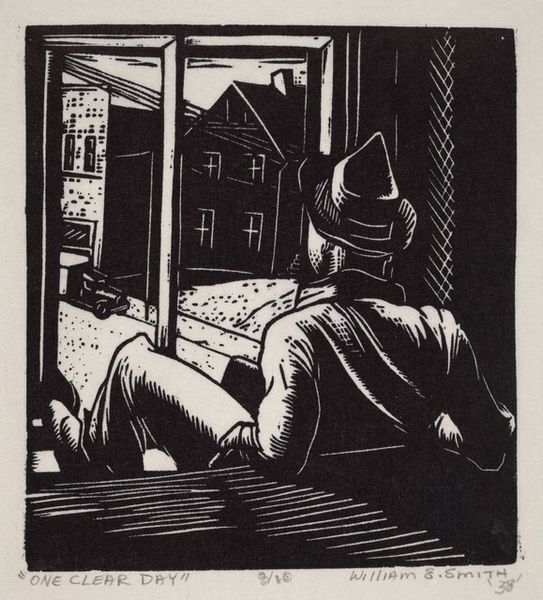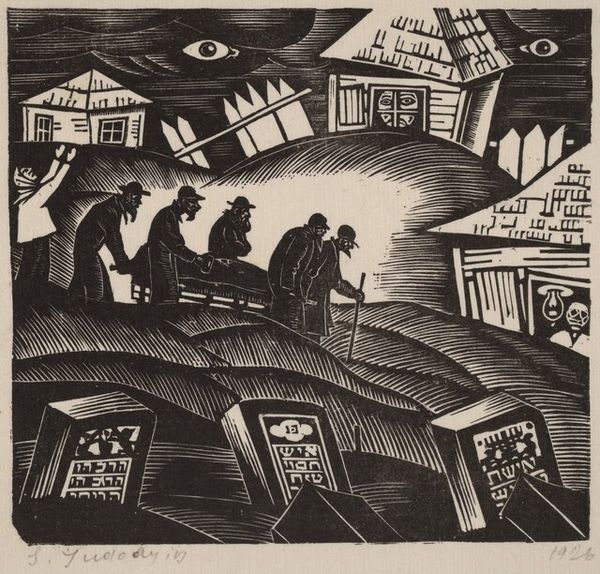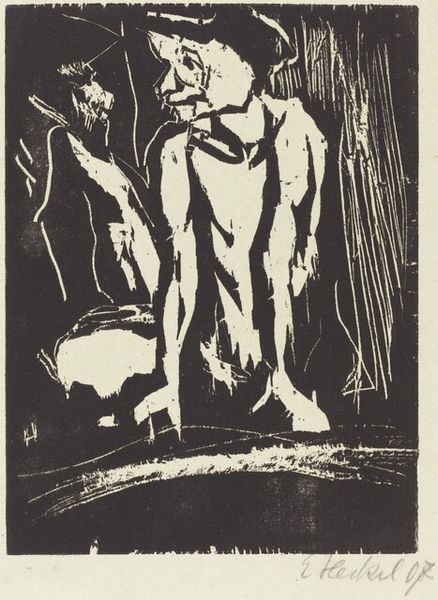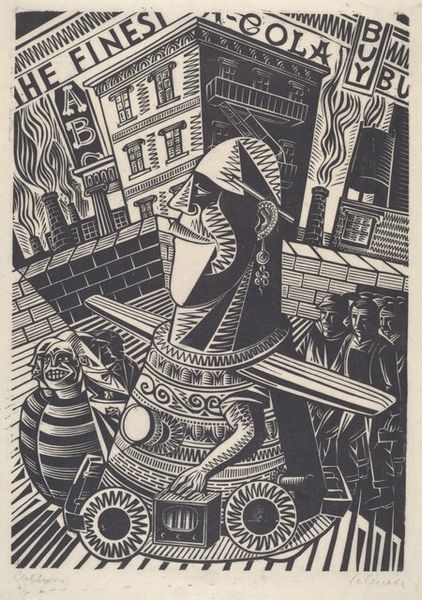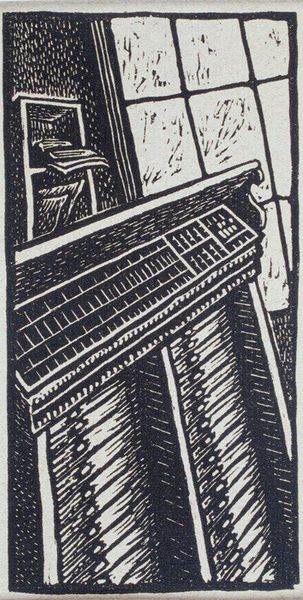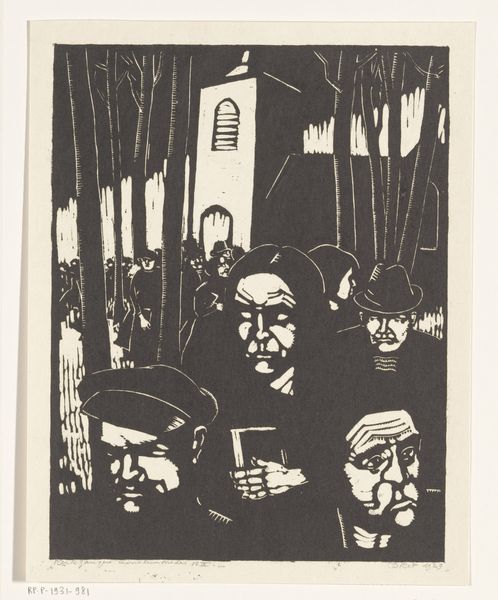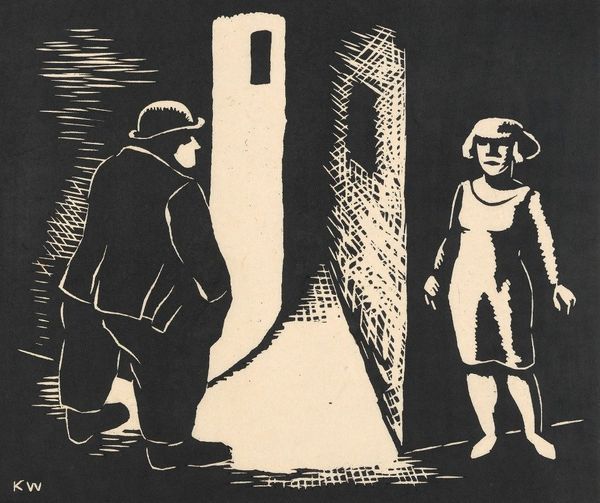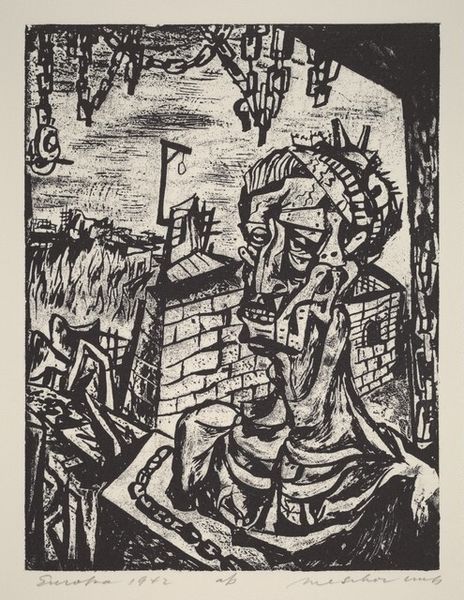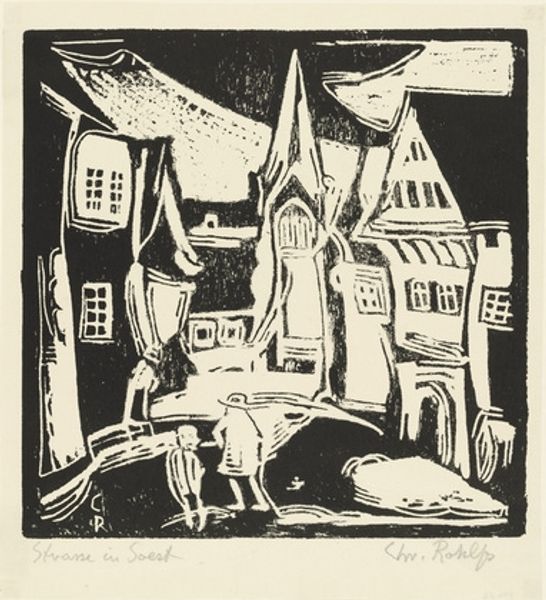
Death of Saint Francis (La morte di San Francesco; particolare da Giotto) 1966
0:00
0:00
print, woodcut
#
medieval
#
narrative-art
# print
#
figuration
#
woodcut
Copyright: National Gallery of Art: CC0 1.0
Editor: This woodcut, Pietro Parigi’s "Death of Saint Francis," from 1966, feels stark, doesn't it? The contrast between the black ink and white paper is so striking, especially with the Saint so mournfully hunched over in the foreground, dwarfed by the basilica. How do you interpret this work? Curator: I see it as a powerful statement about the weight of legacy and institutionalization. Parigi, in choosing to represent this particular moment, the *death* of Saint Francis, positions it within a broader narrative. Think about what Saint Francis stood for: a radical rejection of wealth, a deep connection with the poor and marginalized. Now look at that looming basilica. Editor: You mean how the church itself, that grand architecture, seems almost opposed to Francis's original mission? Curator: Precisely. It speaks volumes about the complex relationship between revolutionary ideals and the institutions that often co-opt or dilute them. It is almost a study of class warfare, do you think? Editor: It's like the building has come to swallow him whole, casting a large shadow upon his very existence, almost literally in this image. I did not think of that at all. Curator: And that positioning is key. How can you take something from life and then turn around and erase it. The materiality, the deliberate choice of woodcut, contributes as well. There’s a roughness, an immediacy that mirrors the stark choices Francis made and his identification with the common person. Parigi asks us to confront the paradox of Francis’s life. Editor: I see. So the medium itself enhances the theme of anti-establishment resistance. That makes me see this as more than just a religious scene; it's a political commentary on power, even now, really. Curator: Exactly. And art like this reminds us of the continued relevance of those tensions in our contemporary landscape.
Comments
No comments
Be the first to comment and join the conversation on the ultimate creative platform.
